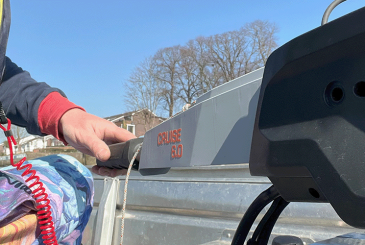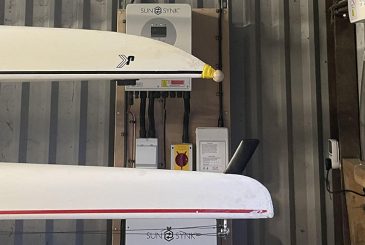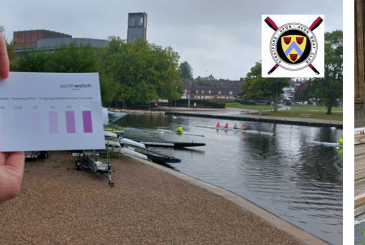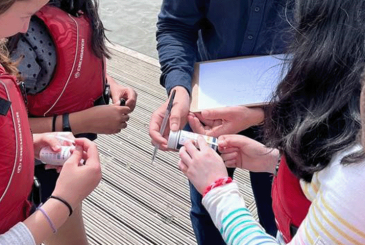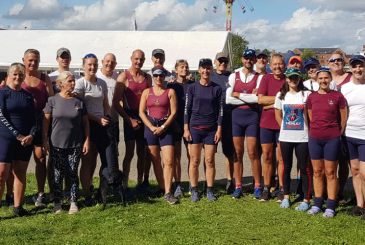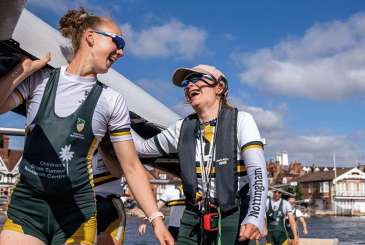Last month, we held a webinar called Together We Can: Invisible Barriers where three guests shared their thoughts on how clubs can enable families with lower incomes to get involved with rowing
Webinar guests – Ciarán Longmore from Gorse Boat Club, Deva Mitre from Lea RC and Amy McCarthy, a HRRCT coach at Sunderland City RC – shared anecdotes and tips from their own personal experiences about the barriers that make it harder for those without the financial support to try out our sport.
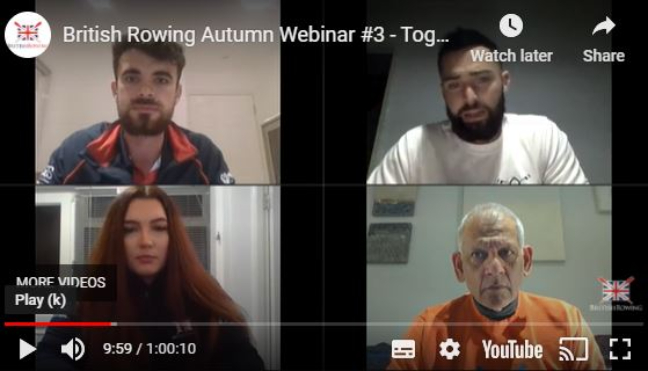
A central thread running through each discussion is that a different approach is often needed to reach out to new audiences.
Read on to hear about their experiences and we hope you are inspired to try some of their insights down at your own club.
1 – Amy McCarthy: a personal view on the invisible barriers
Amy is a Henley Royal Regatta Charitable Trust Coach at British Rowing and is based at City of Sunderland RC.
She says: “As a younger athlete from a low-income household, I have experienced the financial hardship of rowing, and the barriers that come with it.
“Rowing, as a sport, hosts expensive provisions including boats and blades, race fees, boat trailering fees, thermal kit and all-in-ones; not neglecting travelling to more prestigious events, accommodation fees, etc.
“These are all just highlights of the importance of a parent’s economic support and the impact socio-economic status has on a junior athlete’s sports performance.”
Amy delivers free indoor rowing sessions to students in schools from areas of high deprivation, who would never have thought of taking up the sport of rowing.
City of Sunderland is one of the few clubs to offer free taster sessions on the water, with payment plans for athletes’ club fees spread out to support parents on lower incomes.
She says: “Financial priorities for families from low-income backgrounds rank food and clothing purchasing to be of higher importance before paying to participate in sport.
Being a teenager from a low-income household means providing family support from a working-age.
Financial pressures are even worse if a junior becomes a performance athlete and needs to attend more training sessions and camps.
Research suggests that juniors from lower socioeconomic backgrounds may be more prone to episodes of burnout due to factors including training volumes, selection processes, parental expectations, educational pressures and financial independency.
Amy adds: “A massive barrier that needs to be addressed is how we support these up-and-coming athletes through the doors and help them stay there.”
So, how should a rowing coach support these athletes during this transitional period?
Amy shares her top four tips.
How a rowing coach can support juniors
1 – Try not to penalise for lateness or missed sessions
Moving into the later adolescent period where athletes are expected to become more independent, they’d be expected to travel to training alone and manage GCSE and A-level commitments.
Amy explains: “I came from a single parent household and used to have to get two buses and walk 40 minutes to our boat club, and the same to get home.
“I had to do four and a half A-levels to make sure I got into Durham, and in general it becomes a lonely and a slow-burnout process which, I wish, I’d recognised earlier.”
2 – Ask yourself as a coach, what sessions can be done from home?
Can some ergo sessions be swapped for a bike ride, or a run? Do they need to be down at the club when they have an exam that week? Do you penalise your athletes for not attending every session? Can they send you their ergo scores electronically?
Although some of this seems common sense, an expectation that older athletes should be used as role models and so attend every session is a common theme in clubs.
3 – Strip sessions back to basics
Make sessions technique focused, implement skills sessions, and remind the athletes why they fell in love with the sport in the first place.
Could the athlete try something new? Could valuable learning be achieved by asking the older athletes to coach the younger athletes? Have they tried coxing before?
Taking the pressure away from the sports side of things will be a cathartic experience for all athletes across the board, including coaches, with significant impacts on reducing the risk of burnout.
The importance of tapered performance and sporting pressures should be highlighted in athlete routines and training programmes.
4 – Exam timings
National governing bodies should look to sway towards reducing testing and racing commitments over peak-examination periods. This would impact the dates and focuses of designated camps for those aged 16-18, to support the reduction in burnout, injuries and dropout within squads.
2 – Ciarán Longmore: a coach’s view on making the sport as affordable as possible
Based in Leeds, Ciarán coaches juniors at the Gorse Boat Club, a rowing programme for pupils at the Gorse Academies Trust. Its focus is trying to challenge the link between poverty and performance and acknowledging the role of sport in the holistic development of sport in juniors’ development.
Ciarán says: “We encounter quite a few barriers in the programme – because of the schools we work with. Some more visible and some quite surprising.
“When I first came to the job two years ago, I was so surprised by the number of pupils who couldn’t swim. And if you can’t swim, it’s unlikely you’ll want to go out in a rowing boat. So, we’re addressing this, by organising swimming lessons, including one to one swimming tuition.”
Another anecdote he tells is the example of one junior who loved rowing, but who was always late. When asked why, the answer was simple. He didn’t have an alarm clock!
But the main way that the programme is challenging barriers is by ensuring that rowing is as cheap as possible.
Juniors have to buy a British Rowing membership and kit, but everything else is covered by the club – including club fees, race fees and travel. The Trust is able to do this through pupil premium funding.
“We also stretch the pound,” adds Ciarán. “We hire boats and equipment from Leeds RC and are indebted to Leeds RC for this.
“They say they don’t want to see their equipment lying dormant during day – something for other clubs to think about.
“Could other programmes use your club equipment when members aren’t using it?”
Coaching resources is another important area.
Gorse Boat Club has close links with Leeds University BC and the student rowers sometimes help coach the juniors.
The Trust also runs a teacher training programme and the hope is that teachers with a rowing background may want to help coach the Gorse junior rowers too. This would also create a more supportive environment for the junior rowers in the classroom, as they may often not have this understanding at home.
3 – Deva Mitre: how clubs can adapt rowing courses to the wider community
“One of the things that I am challenged by is how ‘monoculture’ our sport is.”
Deva Mitra is talking about how Lea RC has started a programme to improve the ethnic diversity of the adults, with the backing of the Club’s trustees, the coaches and membership.
A key consideration was creating a new approach to their learn-to-row courses that fitted the communities that they are trying to reach.
He says: “How do we create the excitement that will draw them into rowing – perhaps making courses more compact, so costs are smaller, more affordable? And more suited for the busy lifestyles we lead?”
Like many clubs, Lea used to charge £180 for a six-week learn to row course which would be run once a year after Henley. But once a year in July is no good if people want to try the sport out at a different time of the year.
So, instead, they plan to offer bite-sized courses that are run more often and are cheaper, starting with open day sessions that are free of charge. You simply book online and then turn up.
“If you like it, you can do a taster session,” says Deva. “We put people on ergos for 30 minutes and then out into crew boats. There’s a small charge for this.”
The next step up is to do a four-week learn-to-row course which Lea plan to run more often and for less money.
After that, rowers can do an intermediate rowing class which acts as a pathway into the club.
On top of this, a fortnightly drop-in learn-to-row session is also planned. You just pay a fiver on the door and you can learn to row.
But a key question in all of this, says Deva, is how do we fund these initiatives? While the drop-in sessions are the most exciting option, they are also the highest risk financially.
“I believe that money should not be a barrier. So how do we help the people who need more financial support than others?”
Deva continues: “Like most clubs, we don’t have much money, but we have a great number of people who are generous in giving their time to the club. That way courses can be done at a very low cost.”
Another option is a special fund set up in memory of popular club member Sally Lawrence, who sadly passed away earlier this year. The fund aims to provide financial support to adults, particularly those who face barriers and challenges in taking part in rowing.
“We’ve started on a journey, so come back in six months’ time,” says Deva.
“It’s a very exciting project and we’re happy to share our thoughts and learnings with other clubs to help improve diversity in rowing.
“Watch this space!”



